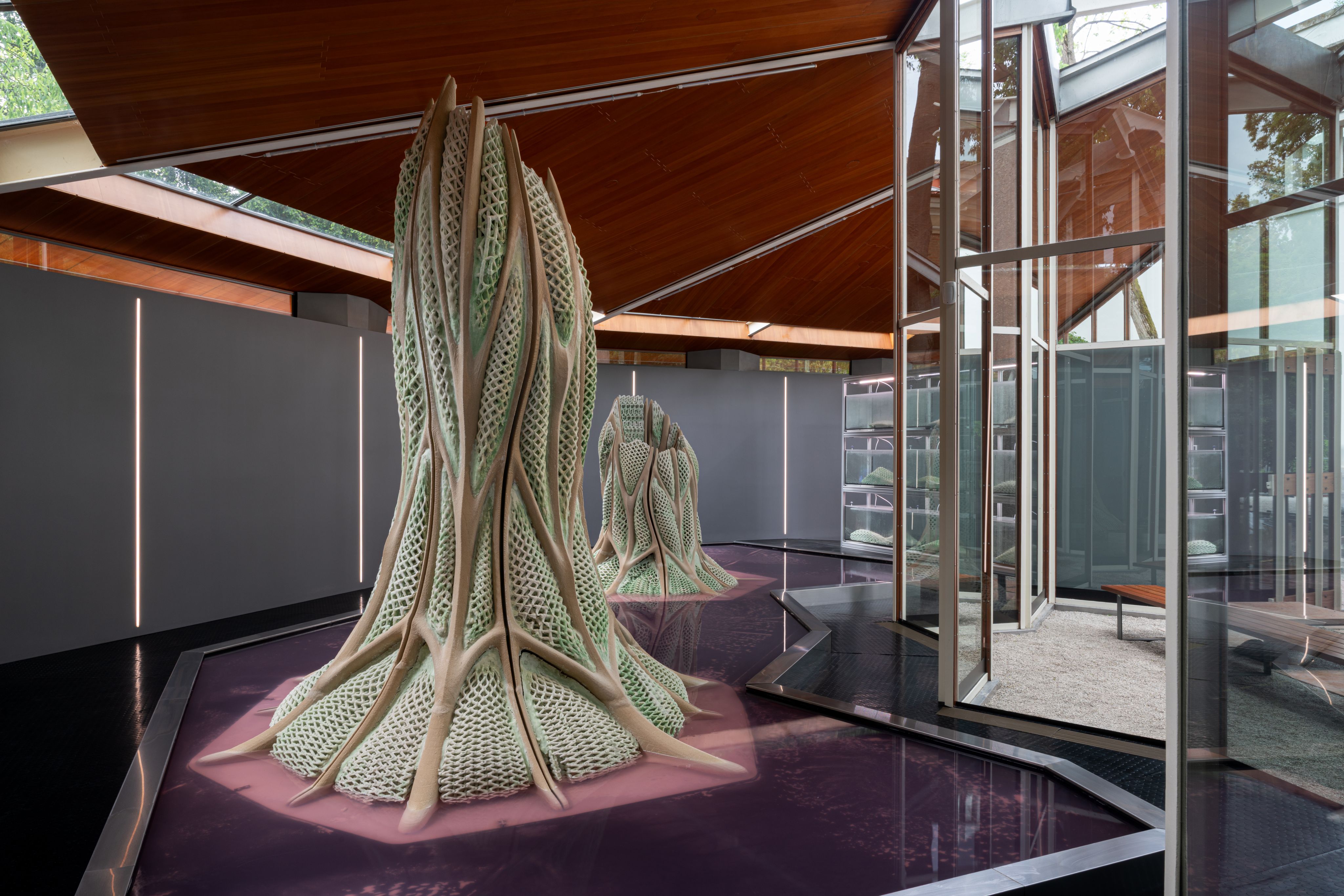Scientists invent photosynthetic 'living' material that sucks CO2 out of the atmosphere
Scientists have developed a material with photosynthetic bacteria that convert carbon dioxide into a mineral skeleton. The material hardens over time, so it could be used for buildings, they say.

Scientists in Switzerland have created a new "living" material that contains blue-green algae and could one day be used in buildings to fight climate change, they say.
Thanks to the blue-green algae, or cyanobacteria, the new material is photosynthetic. This means it can chemically convert carbon dioxide (CO2), sunlight and water into oxygen and sugars, which promote growth.
In the presence of certain nutrients, the material can also convert CO2 into solid carbonate minerals, such as limestone, the researchers said in a new study, published April 23 in the journal Nature Communications. Over time, these minerals build a robust lattice inside the material that strengthens it and stores carbon in a more stable form than photosynthesis does.
"The material can store carbon not only in biomass, but also in the form of minerals — a special property of these cyanobacteria," study co-author Mark Tibbitt, an associate professor of macromolecular engineering at the Swiss Federal Institute of Technology (ETH) Zurich, said in a statement. "As a building material, it could help to store CO2 directly in buildings in the future."
Without the ability to sequester carbon in mineral form, the new material would be floppy and jelly-like. But by producing a mineral skeleton with CO2 and nutrients, the material gradually enhances its own mechanical strength, making it a good candidate for construction, according to the study.
The researchers suggest the material could one day be used as a coating on building facades to suck CO2 directly out of the atmosphere. In the study, the material continuously sequestered CO2 for 400 consecutive days, storing approximately 26 milligrams of CO2 per gram of material in the form of carbonate precipitates. This rate is highly efficient and significantly higher than other forms of biological CO2 sequestration, the researchers said.
Related: New wonder material designed by AI is as light as foam but as strong as steel
Get the world’s most fascinating discoveries delivered straight to your inbox.

The material's increasingly vibrant green color is evidence that it stores CO2 in the form of biomass. But cyanobacteria can only grow so much, and the rate at which carbon was stored inside the bacterial cells leveled out after about 30 days, according to the study. This means that carbon sequestration in the form of biomass decreases beyond this timeframe, but it doesn't stop.
The base of the new material is a 3D printable hydrogel — a gel with a high water content made of cross-linked molecules. The researchers selected a porous hydrogel and grew cyanobacteria inside it, ensuring that enough light, water and CO2 could penetrate the gel to reach the bacteria. The scientists then tested different shapes of hydrogel to determine the best geometry for cyanobacteria survival.
"Cyanobacteria are among the oldest life forms in the world," study co-author Yifan Cui, a doctoral student in macromolecular engineering at ETH Zurich, said in the statement. "They are highly efficient at photosynthesis and can utilize even the weakest light to produce biomass from CO2 and water."

In the study, the researchers bathed the hydrogels in artificial seawater to supply the necessary nutrients for mineral precipitation. Further research is needed to determine how those nutrients, which include calcium and magnesium, could be injected into the material if it was coating a building.
In the meantime, the researchers are dreaming up different shapes that the material could take. At an architecture exhibition in Venice, the team presented their material in the form of two tree trunk-like objects that could each absorb up to 40 pounds (18 kilograms) of CO2 per year — or as much as a 20-year-old pine tree, according to the statement.
It might be possible to genetically engineer cyanobacteria to increase their photosynthetic rates before embedding them in the material, the researchers noted in the study.
"We see our living material as a low-energy and environmentally friendly approach that can bind CO2 from the atmosphere and complement existing chemical processes for carbon sequestration," Tibbitt said.

Sascha is a U.K.-based staff writer at Live Science. She holds a bachelor’s degree in biology from the University of Southampton in England and a master’s degree in science communication from Imperial College London. Her work has appeared in The Guardian and the health website Zoe. Besides writing, she enjoys playing tennis, bread-making and browsing second-hand shops for hidden gems.
You must confirm your public display name before commenting
Please logout and then login again, you will then be prompted to enter your display name.


